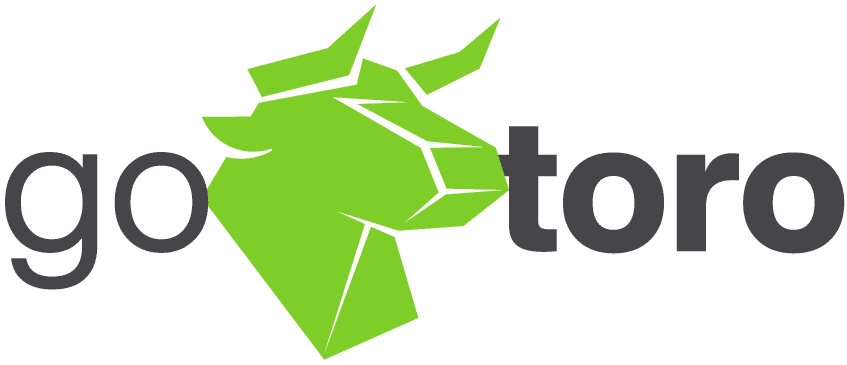In today’s dynamic business environment, managing human resources effectively is critical for organizational success. Two key concepts in workforce management are job distribution and job optimization. While they may seem similar, they serve distinct purposes and involve different processes. Understanding the differences between these two approaches can help businesses allocate tasks efficiently, improve productivity, and ensure that job roles remain relevant and attractive to top talent. This blog will explore the definitions, focuses, processes, goals, tools, and key differences between job distribution and job optimization.
Job Distribution

Definition of Job Distribution
Understanding the difference between job distribution and job optimization begins with defining each term clearly. Job distribution involves the categorization of roles across various seniority levels within an organization. This process systematically assigns and distributes roles to meet organizational needs efficiently. By strategically categorizing roles, companies fill each position with the most suitable candidate, maintaining a balanced and productive workforce.
Focus of Job Distribution
The primary focus of job distribution is to ensure that tasks are assigned and spread out effectively to ensure coverage and manage workload. Unlike job optimization, which continually adjusts roles for peak efficiency, job distribution aims to establish a stable framework for task allocation. This involves careful planning to prevent overburdening any single resource and to make sure that all necessary tasks are covered.
The Process of Job Distribution
To further understand the difference between job distribution and job optimization, it is essential to look at the processes involved in job distribution. One of the key steps is posting job openings on multiple job boards and career sites. To attract a broad pool of candidates, job openings are advertised across various platforms such as Indeed, LinkedIn, and other specialized job boards. This increases the visibility and reach of the job postings.
Another crucial aspect is assigning tasks to team members based on availability and skill sets. Managers allocate tasks by matching them with the most appropriate team members, ensuring that each task is handled by someone with the relevant skills and availability, enhancing overall efficiency. Additionally, ensuring that no single resource is overburdened is a critical aspect of job distribution. This involves monitoring workload distribution to prevent burnout and conducting regular assessments to ensure that tasks are evenly distributed among employees.
Goal of Job Distribution
The goal of job distribution is to maximize the visibility and reach of job openings while balancing the workload among employees. By effectively distributing tasks, organizations can ensure that they attract a diverse pool of candidates and maintain a productive work environment. This balance helps in achieving organizational objectives without overloading any team member.
Tools Used
To efficiently manage job distribution, various tools and platforms are utilized. Applicant tracking systems (ATS) streamline the recruitment process by managing job postings, applications, and candidate communications. Job distribution platforms like Indeed and LinkedIn help distribute job ads to a wider audience, increasing the chances of attracting qualified candidates. Project management tools such as Asana and Trello aid in task assignment and workload management, ensuring that tasks are distributed based on availability and skill sets.
Examples
To illustrate the difference between job distribution and job optimization, consider these examples. Distributing job ads to various online platforms helps organizations attract a diverse pool of candidates, ensuring that they find the best fit for each role. Another example is delegating tasks in a project. In a team project, tasks are assigned to different members based on their strengths, utilizing each team member’s skills effectively, ensuring a balanced workload and optimal project outcomes.
Understanding the difference between job distribution and job optimization is crucial for effective workforce management. Job distribution focuses on establishing a stable framework for task allocation, ensuring coverage and balanced workloads. In contrast, job optimization continuously adjusts and improves roles to align with evolving business needs. Both approaches play a vital role in enhancing organizational performance and achieving business objectives.
Job Optimization

Definition of Job Optimization
To fully grasp the difference between job distribution and job optimization, it is essential to understand what job optimization entails. Optimization refers to the process of making something as effective, efficient, and functional as possible. In the context of job optimization, it refers to the continuous adjustment and improvement of job levels to align with evolving business needs. This approach ensures that each role is fine-tuned to enhance productivity, quality, and overall performance within the organization.
Focus of Job Optimization
The primary focus of job optimization is on enhancing performance and achieving the best possible outcomes with the resources available. Unlike job distribution, which is more static in nature, job optimization is dynamic and involves continuous improvements. The goal is to refine processes, eliminate inefficiencies, and ensure that every role is contributing optimally to the organization’s objectives. This focus on optimization helps businesses stay competitive and responsive to changing market conditions.
The Process of Job Optimization
Understanding the process of job optimization is crucial in distinguishing it from job distribution. The first step in job optimization is analyzing current processes to identify inefficiencies. This involves a thorough review of existing workflows, job roles, and performance metrics to pinpoint areas that need improvement. Once inefficiencies are identified, the next step is implementing strategies to improve productivity and quality. This could include adopting new technologies, refining job roles, or enhancing training programs. Continuous monitoring and adjusting processes are essential to ensure peak performance. By regularly evaluating and tweaking processes, organizations can maintain high efficiency and adapt to new challenges and opportunities.
Goal of Job Optimization
The ultimate goal of job optimization is to ensure that ads reach the optimal audience at the perfect time, maximizing ad spend through strategic placement and real-time optimization with the right publishers. This involves using advanced tools and technologies to analyze performance data, adjust strategies in real-time, and achieve the best possible results. Job optimization aims to enhance efficiency, reduce costs, and improve outcomes, making it a critical component of effective workforce management.
Tools Used
To achieve the goals of job optimization, various tools and technologies are employed. One such tool is GoToro’s L.E.O., which optimizes ad spend in real-time as the campaign runs. This technology allows organizations to adjust their strategies based on live performance data, ensuring that resources are used most effectively. Other tools might include data analytics platforms, performance monitoring software, and optimization algorithms that help refine job roles and processes continuously.
Examples
To illustrate the difference between job distribution and job optimization, consider these examples. Streamlining a recruitment process to reduce the time to hire is a key example of job optimization. By analyzing the recruitment workflow, identifying bottlenecks, and implementing improvements, organizations can significantly reduce the time it takes to fill positions. Another example is placing bids for job advertisements. In job optimization, bids are placed neither too high nor too low, ensuring peak efficiency for each job title and advertising location. This strategic approach helps maximize ad spend and reach the right audience effectively.
Understanding the difference between job distribution and job optimization is crucial for effective workforce management. While job distribution focuses on allocating tasks and roles to ensure coverage and balanced workloads, job optimization aims to enhance efficiency and achieve the best outcomes with available resources. Both approaches are vital for organizational performance, with job distribution providing a stable framework and job optimization driving continuous improvement and relevance.
Key Differences
Scope: Understanding the Difference between Job Distribution and Job Optimization
When exploring the difference between job distribution and job optimization, scope is a fundamental aspect to consider. Job distribution involves the categorization of roles across various seniority levels within an organization. This means that roles are predefined and allocated based on a fixed structure that does not frequently change. The primary aim is to ensure that each role is clearly defined, with specific responsibilities and expectations.
On the other hand, job optimization is focused on making sure your ads are being optimized in real-time. This involves continuously adjusting and improving job roles to align with evolving business needs and market conditions. Unlike the static nature of job distribution, job optimization is dynamic, requiring constant monitoring and tweaking to enhance performance and efficiency. The scope of job optimization extends beyond mere role allocation to include real-time adjustments in job advertising strategies, ensuring that resources are utilized most effectively.
Objective: The Goal of Job Distribution vs. Job Optimization
The objectives of job distribution and job optimization are distinct, highlighting another critical difference between these two approaches. The primary objective of job distribution is to ensure coverage, manage workloads, and increase the visibility of job postings. By effectively distributing tasks, organizations aim to prevent any single employee from becoming overburdened and to ensure that all necessary tasks are completed. This helps maintain a balanced workload and promotes operational efficiency.
In contrast, the objective of job optimization is to enhance performance, reduce costs and time, and maximize outcomes. Job optimization focuses on improving the effectiveness and efficiency of job roles and advertising strategies. This involves implementing strategies that streamline processes, eliminate inefficiencies, and ensure that job ads reach the right audience at the optimal time. By continuously refining these processes, organizations can achieve better results, reduce hiring time, and make more cost-effective use of their resources.
Employee Experience: How Job Distribution and Job Optimization Impact Employees
The difference between job distribution and job optimization also extends to the employee experience. Job distribution offers clear expectations and defined career paths. By categorizing roles and responsibilities, employees have a clear understanding of their duties and the expectations placed upon them. This clarity can lead to increased job satisfaction, as employees know what is required to succeed in their roles and what opportunities are available for advancement.
Job optimization, on the other hand, promotes continuous growth and development opportunities, improving job satisfaction and retention. Through continuous adjustments and improvements, job optimization ensures that roles remain relevant and challenging. This dynamic approach continually engages employees in meaningful work that evolves with their skills and interests, leading to greater job satisfaction. Moreover, by aligning job roles with current industry standards and business needs, job optimization helps retain top talent by providing opportunities for professional growth and development.
Approach: Static Setup vs. Ongoing Assessment in Job Distribution and Job Optimization
The approach taken in job distribution and job optimization differs significantly, underscoring the difference between these two strategies. Job distribution typically involves a one-time setup during organizational planning. Roles and responsibilities are defined, and tasks are allocated based on this fixed structure. While this approach provides stability and clarity, it can become outdated if not regularly reviewed and adjusted to meet changing business needs.
In contrast, job optimization requires ongoing assessment and adjustments based on performance data and market trends. This approach is dynamic and continuous, involving regular evaluations of job roles and advertising strategies to identify areas for improvement. Job optimization constantly refines roles and strategies by leveraging real-time data and analytics to enhance efficiency and effectiveness. This continuous improvement approach allows organizations to remain agile and responsive to changes in the business environment.
Impact on Recruitment: Stability vs. Relevance

The impact on recruitment is another key difference between job distribution and job optimization. Job distribution provides a stable framework for defining job roles and responsibilities. This stability can be beneficial for recruitment, as potential candidates have a clear understanding of the roles and expectations within the organization. However, if not regularly reviewed, this static framework can become outdated and may not align with current industry standards or business needs.
Job optimization, on the other hand, ensures that job roles remain relevant and attractive to top talent by continually aligning with industry standards. By regularly assessing and adjusting job roles and advertising strategies, job optimization keeps recruitment efforts up-to-date and effective. This dynamic approach helps attract and retain top talent by offering roles that are challenging, relevant, and aligned with current market trends. Consequently, job optimization can lead to a more engaged and high-performing workforce.
Challenges: Maintenance and Commitment
Both job distribution and job optimization come with their own set of challenges. Job distribution can become outdated and inefficient if not regularly reviewed. A static approach to role allocation may fail to keep pace with changing business needs and market conditions, leading to inefficiencies and potential gaps in coverage. Regular reviews and adjustments are necessary to ensure that the job distribution framework remains effective and relevant.
Job optimization, while highly effective, requires resources and commitment to implement ongoing changes effectively. Continuous monitoring, assessment, and adjustments demand time, effort, and investment in technology and tools. Organizations must be willing to commit these resources to maintain an effective job optimization strategy. However, the benefits of improved performance, reduced costs, and enhanced employee satisfaction can outweigh these challenges, making job optimization a valuable approach for many businesses.
Understanding the difference between job distribution and job optimization is crucial for effective workforce management. While job distribution focuses on establishing a stable framework for task allocation, ensuring coverage, and managing workloads, job optimization aims to enhance efficiency, reduce costs, and maximize outcomes through continuous improvement. Both approaches play vital roles in enhancing organizational performance and achieving business objectives, with job distribution providing stability and job optimization driving ongoing relevance and excellence.
Recap
Understanding the difference between job distribution and job optimization is crucial for effective workforce management.
Job distribution focuses on allocating tasks and roles to ensure coverage and balance workloads. It provides a stable framework for task allocation, clearly defining roles and responsibilities to prevent overburdening employees.
Job optimization aims to enhance efficiency and achieve the best outcomes with available resources. It involves continuous adjustments and improvements to align job roles with evolving business needs, promoting performance and growth.
Both approaches are vital for HR strategy and organizational performance. Job distribution offers stability and clarity, while job optimization drives continuous improvement and relevance. Together, they ensure effective workforce management and better organizational outcomes. Experience the benefits of streamlined recruitment with GoToro – request your demo today.


